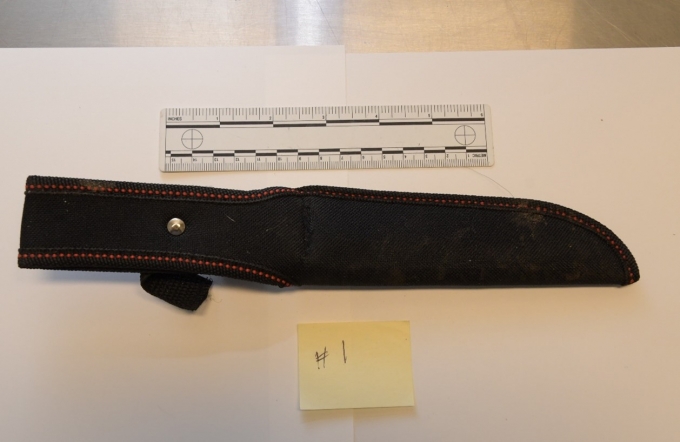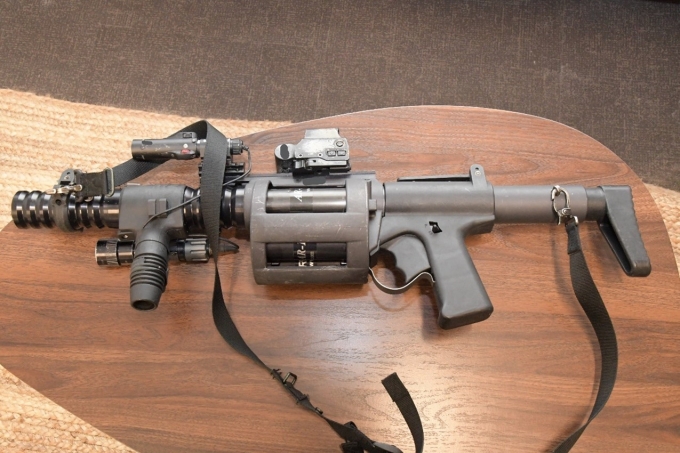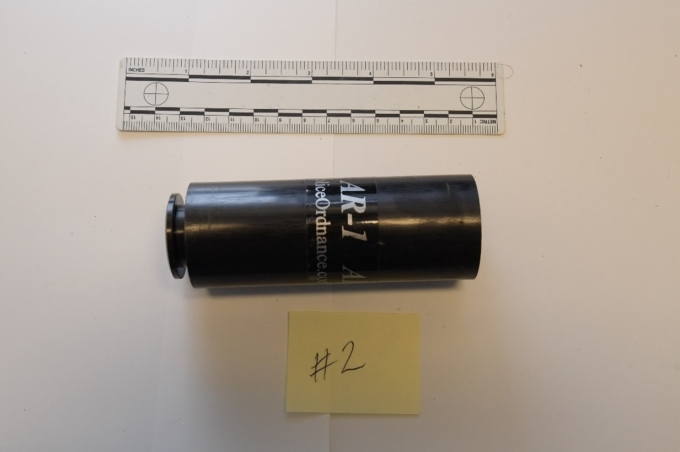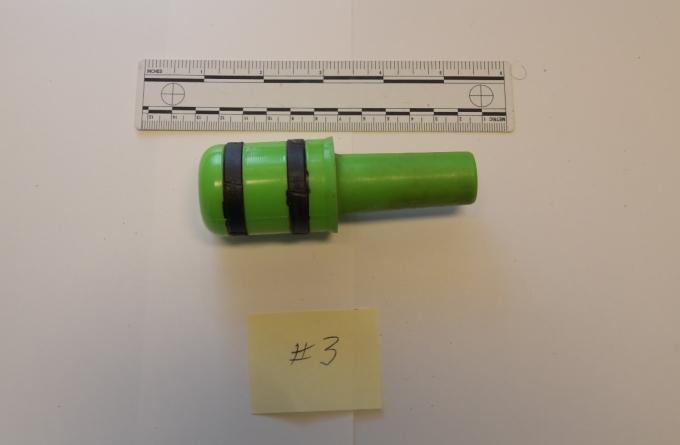SIU Director’s Report - Case # 22-PFP-086
Warning:
This page contains graphic content that can shock, offend and upset.
Contents:
Mandate of the SIU
The Special Investigations Unit is a civilian law enforcement agency that investigates incidents involving an official where there has been death, serious injury, the discharge of a firearm at a person or an allegation of sexual assault. Under the Special Investigations Unit Act, 2019 (SIU Act), officials are defined as police officers, special constables of the Niagara Parks Commission and peace officers under the Legislative Assembly Act. The SIU’s jurisdiction covers more than 50 municipal, regional and provincial police services across Ontario.
Under the SIU Act, the Director of the SIU must determine based on the evidence gathered in an investigation whether there are reasonable grounds to believe that a criminal offence was committed. If such grounds exist, the Director has the authority to lay a criminal charge against the official. Alternatively, in cases where no reasonable grounds exist, the Director cannot lay charges. Where no charges are laid, a report of the investigation is prepared and released publicly, except in the case of reports dealing with allegations of sexual assault, in which case the SIU Director may consult with the affected person and exercise a discretion to not publicly release the report having regard to the affected person’s privacy interests.
Under the SIU Act, the Director of the SIU must determine based on the evidence gathered in an investigation whether there are reasonable grounds to believe that a criminal offence was committed. If such grounds exist, the Director has the authority to lay a criminal charge against the official. Alternatively, in cases where no reasonable grounds exist, the Director cannot lay charges. Where no charges are laid, a report of the investigation is prepared and released publicly, except in the case of reports dealing with allegations of sexual assault, in which case the SIU Director may consult with the affected person and exercise a discretion to not publicly release the report having regard to the affected person’s privacy interests.
Information Restrictions
Special Investigations Unit Act, 2019
Pursuant to section 34, certain information may not be included in this report. This information may include, but is not limited to, the following:- The name of, and any information identifying, a subject official, witness official, civilian witness or affected person.
- Information that may result in the identity of a person who reported that they were sexually assaulted being revealed in connection with the sexual assault.
- Information that, in the opinion of the SIU Director, could lead to a risk of serious harm to a person.
- Information that discloses investigative techniques or procedures.
- Information, the release of which is prohibited or restricted by law.
- Information in which a person’s privacy interest in not having the information published clearly outweighs the public interest in having the information published.
Freedom of Information and Protection of Privacy Act
Pursuant to section14 (i.e., law enforcement), certain information may not be included in this report. This information may include, but is not limited to, the following:- Confidential investigative techniques and procedures used by law enforcement agencies; and
- Information that could reasonably be expected to interfere with a law enforcement matter or an investigation undertaken with a view to a law enforcement proceeding.
- The names of persons, including civilian witnesses, and subject and witness officials;
- Location information;
- Witness statements and evidence gathered in the course of the investigation provided to the SIU in confidence; and
- Other identifiers which are likely to reveal personal information about individuals involved in the investigation.
Personal Health Information Protection Act, 2004
Pursuant to this legislation, any information related to the personal health of identifiable individuals is not included.Other proceedings, processes, and investigations
Information may also have been excluded from this report because its release could undermine the integrity of other proceedings involving the same incident, such as criminal proceedings, coroner’s inquests, other public proceedings and/or other law enforcement investigations.Mandate Engaged
Pursuant to section 15 of the SIU Act, the SIU may investigate the conduct of officials, be they police officers, special constables of the Niagara Parks Commission or peace officers under the Legislative Assembly Act, that may have resulted in death, serious injury, sexual assault or the discharge of a firearm at a person.
A person sustains a “serious injury” for purposes of the SIU’s jurisdiction if they: sustain an injury as a result of which they are admitted to hospital; suffer a fracture to the skull, or to a limb, rib or vertebra; suffer burns to a significant proportion of their body; lose any portion of their body; or, as a result of an injury, experience a loss of vision or hearing.
In addition, a “serious injury” means any other injury sustained by a person that is likely to interfere with the person’s health or comfort and is not transient or trifling in nature.
This report relates to the SIU’s investigation into the discharge of a firearm by the police at a 30-year-old man (the “Complainant”)
A person sustains a “serious injury” for purposes of the SIU’s jurisdiction if they: sustain an injury as a result of which they are admitted to hospital; suffer a fracture to the skull, or to a limb, rib or vertebra; suffer burns to a significant proportion of their body; lose any portion of their body; or, as a result of an injury, experience a loss of vision or hearing.
In addition, a “serious injury” means any other injury sustained by a person that is likely to interfere with the person’s health or comfort and is not transient or trifling in nature.
This report relates to the SIU’s investigation into the discharge of a firearm by the police at a 30-year-old man (the “Complainant”)
The Investigation
Notification of the SIU
On March 24, 2022, at 2:41 a.m., the Ontario Provincial Police (OPP) notified the SIU of an injury to the Complainant. Reportedly, on March 24, 2022, at 12:10 a.m., OPP Midland Street Crime Unit officers followed a drug trafficking suspect, the Complainant, to a residence located in Severn Bridge, Ontario. OPP Emergency Response Team (ERT) officers were monitoring the call and attended the area. The police officers attempted to talk to the Complainant out of the residence to be arrested but he refused. It was soon learned that the Complainant had ingested drugs and was having a medical episode. The ERT breached the door and located the Complainant inside brandishing a large knife that he would not surrender. An Anti-riot Weapon ENfield (ARWEN) strike was deployed to the thigh area and was effective in having the Complainant drop the knife. Immediately thereafter, the Complainant lost consciousness. Narcan was administered six times by police officers, and the Complainant regained consciousness. The Complainant walked out of the residence without further incident.
The Complainant was currently at Orillia’s Soldiers’ Memorial Hospital (OSMH).
The ARWEN was deployed by the Subject Official (SO), and the SO and Witness Official (WO) #4 administered the Narcan.
The Team
Date and time team dispatched: 03/24/2022 at 3:45 a.m.Date and time SIU arrived on scene: 03/24/2022 at 7:07 a.m.
Number of SIU Investigators assigned: 3
Number of SIU Forensic Investigators assigned: 1
Affected Person (aka “Complainant”):
30-year-old male; interviewed; medical records obtained and reviewedThe Complainant was interviewed on March 24, 2022, and May 5, 2022.
Civilian Witnesses (CW)
CW #1 InterviewedCW #2 Interviewed
CW #3 Interviewed
The civilian witnesses were interviewed between April 4, 2022, and May 9, 2022.
Subject Official
SO Interviewed, and notes received and reviewed The subject official was interviewed on May 9, 2022.
Witness Officials
WO #1 Not interviewed, but notes received and reviewed WO #2 Not interviewed, but notes received and reviewed
WO #3 Interviewed
WO #4 Interviewed
WO #5 Interviewed
WO #6 Interviewed
WO #7 Interviewed
WO #8 Not interviewed, but notes received and reviewed
WO #9 Not interviewed, but notes received and reviewed
WO #10 Not interviewed, but notes received and reviewed
WO #11 Not interviewed, but notes received and reviewed
WO #12 Interviewed
WO #13 Interviewed
The witness officials were interviewed between March 30, 2022, and May 25, 2022.
Evidence
The Scene
The scene was located at a residence in Severn Bridge, Ontario. The Complainant was found in the closet of a bedroom. Physical Evidence
The following items were collected at the scene:- Knife;
- Knife sheath;
- ARWEN projectile case; and
- ARWEN projectile.

Figure 1 – The knife

Figure 2 – Knife sheath

Figure 3 – The SO’s ARWEN

Figure 4 – ARWEN projectile case

Figure 5 – ARWEN projectile
Video/Audio/Photographic Evidence [1]
OPP Communication Recordings
Audio Dispatch TelephoneAt 14 minutes and 3 seconds into the recording, the dispatcher called Emergency Medical Services (EMS).
At 15 minutes and 30 seconds into the recording, the dispatcher called EMS again and asked them to attend the scene for a possible overdose. It was noted that cardiopulmonary resuscitation (CPR) was in progress and an ARWEN had been deployed.
Audio Dispatch
The dispatcher asked a sergeant, Officer #1, to look at the occurrence. The police officers were tracking a man [known to be the Complainant] to arrest him. The Complainant had taken off from a vehicle and run into a house.
Officer #1 asked why he was getting a Feeney warrant [2] and SO said it was the Complainant’s apartment. Officer #1 told the SO that he could go in the house and repeated that he did not need a Feeney warrant. The SO said WO #12 disagreed and the SO provided him with all the updates.
Officer #1 said the Complainant had no colour of right to the house; he was a boarder, and he could get kicked out at anytime. Officer #1 said that if CW #1 were to say to the SO that she wanted the Complainant out and it was a shared common space with a shared kitchen and a shared bathroom, then the Complainant could be evicted with a warrant. On the other hand, if the Complainant’s unit had a kitchen and bathroom, then that would be different circumstances.
In the background, the SO asked CW #1 if the Complainant had his own kitchen and bathroom and CW #1 said there was a common kitchen and bathroom. Officer #1 told the SO he was trying to help him. The SO said the Complainant had serious charges and he would hold the house for the Feeney warrant.
Officer #1 told Officer #2 that WO #4, WO #5 and the SO were assisting with a call on a specified street in Severn Bridge. WO #12 was obtaining a Feeney warrant and the house was contained until a Feeney warrant was obtained to allow entry.
The dispatcher subsequently advised Officer #1 that CPR was in process and that the Complainant had overdosed. She told Officer #1 that WO #7 wanted him advised that an ARWEN had been deployed.
Officer #2 told Officer #1 that he had called WO #12 and asked if it was better for the police officers to back off and deal with the Complainant another day. WO #12 said he was going to write the Feeney warrant. WO #12 called Officer #2 and said the police officers had information that the Complainant had ingested fentanyl to overdose so the decision had been taken to enter the house without a Feeney warrant.
Audio - Sergeant Telephone
Officer #1 from the Communications Centre spoke to the Provincial Operations Centre. He advised that officers were trying to arrest a man [known to be the Complainant] on warrants. They had found the Complainant on a specified street in Severn Bridge. He had bailed from a car and run into a house where he rented a room. The homeowner told the police the Complainant was hiding from the police. Officer #1 did not understand why the police officers did not do a fresh pursuit entry, but they decided to contain and wait for a Feeney warrant. WO #12 was obtaining the warrant.
At 1:23 a.m., EMS was expedited for a possible overdose, and it was noted that CPR was in progress.
An ERT sergeant, Officer #2, called the sergeant and advised him that WO #12 had told him that an unknown source said the Complainant was in the house using fentanyl and was trying to overdose. The police officers breached the door but, when they got into the room, the Complainant was hiding. ERT deployed the ARWEN and the Complainant was vital sign absent. The Complainant had walked to the ambulance and WO #3 was escorting him in the ambulance.
Materials Obtained from the Service
Upon request, the SIU received the following materials from the OPP between March 29, 2022, and June 28, 2022:- Communications recordings;
- Police contacts;
- Warrant;
- Event Details;
- Notes- SO;
- Notes- WO #2;
- Notes- WO #8;
- Notes- WO #9;
- Notes- WO #6;
- Notes- WO #7;
- Notes- WO #3;
- Notes- WO #13;
- Notes- WO #12;
- Notes- WO #11;
- Notes- WO #5;
- Notes- WO #10;
- Notes- WO #1;
- Notes- WO #4;
- Occurrence Report;
- Witness Statement - CW #2; and
- Property Report.
Materials Obtained from Other Sources
The SIU obtained and reviewed the following records from other sources: - Medical Records – OSMH
Incident Narrative
The following scenario emerges from the evidence collected by the SIU, which included interviews with the Complainant, SO, and several other officers who witnessed the events in question.
Shortly after midnight of March 24, 2022, OPP officers, including the SO, confronted the Complainant outside a residence in Severn Bridge. The Complainant was renting a room at the address. Officers in the area had been on the lookout to arrest the Complainant on an outstanding warrant for assaults and other crimes. At the sight of the police outside the residence, the Complainant ran into the house and took refuge inside the closet of the homeowner’s bedroom.
The SO sought the assistance of other officers and was soon joined by fellow ERT members. Believing they did not have legal authorization to enter the home, they surrounded the house while a Feeney warrant was being prepared. They repeatedly called out to the Complainant to surrender himself but were met with no response. The homeowner – CW #1, and her daughter – CW #2, and friend, vacated the premises at the police request. Shortly thereafter, two other women, acquaintances of the Complainant’s who had returned with him to the house the evening before, also exited the home.
At about 1:15 a.m., after not having heard from the Complainant and having learned from CW #1 that the Complainant was in the habit of carrying fentanyl, the SO led a team of ERT officers into the house. They entered a bedroom and located the Complainant hiding behind some clothes. When the Complainant failed to remove himself from the closet after several verbal requests, the SO fired his ARWEN at a part of his body that was exposed – his upper left leg. There was no reaction by the Complainant to the impact. The SO and other officers cleared away the clothing and found an unresponsive Complainant.
The Complainant had overdosed on fentanyl and was in medical distress. The officers carried him to the living room and administered first aid. CPR was performed and multiple doses of Narcan provided. The Complainant was eventually resuscitated and left in the care of paramedics, who had been staging nearby.
The Complainant was arrested and transported via ambulance to hospital. He was discharged later in the day.
Shortly after midnight of March 24, 2022, OPP officers, including the SO, confronted the Complainant outside a residence in Severn Bridge. The Complainant was renting a room at the address. Officers in the area had been on the lookout to arrest the Complainant on an outstanding warrant for assaults and other crimes. At the sight of the police outside the residence, the Complainant ran into the house and took refuge inside the closet of the homeowner’s bedroom.
The SO sought the assistance of other officers and was soon joined by fellow ERT members. Believing they did not have legal authorization to enter the home, they surrounded the house while a Feeney warrant was being prepared. They repeatedly called out to the Complainant to surrender himself but were met with no response. The homeowner – CW #1, and her daughter – CW #2, and friend, vacated the premises at the police request. Shortly thereafter, two other women, acquaintances of the Complainant’s who had returned with him to the house the evening before, also exited the home.
At about 1:15 a.m., after not having heard from the Complainant and having learned from CW #1 that the Complainant was in the habit of carrying fentanyl, the SO led a team of ERT officers into the house. They entered a bedroom and located the Complainant hiding behind some clothes. When the Complainant failed to remove himself from the closet after several verbal requests, the SO fired his ARWEN at a part of his body that was exposed – his upper left leg. There was no reaction by the Complainant to the impact. The SO and other officers cleared away the clothing and found an unresponsive Complainant.
The Complainant had overdosed on fentanyl and was in medical distress. The officers carried him to the living room and administered first aid. CPR was performed and multiple doses of Narcan provided. The Complainant was eventually resuscitated and left in the care of paramedics, who had been staging nearby.
The Complainant was arrested and transported via ambulance to hospital. He was discharged later in the day.
Relevant Legislation
Section 25(1), Criminal Code -- Protection of persons acting under authority
25 (1) Every one who is required or authorized by law to do anything in the administration or enforcement of the law
(a) as a private person,(b) as a peace officer or public officer,(c) in aid of a peace officer or public officer, or(d) by virtue of his office,
is, if he acts on reasonable grounds, justified in doing what he is required or authorized to do and in using as much force as is necessary for that purpose.
Analysis and Director's Decision
On March 24, 2022, the OPP contacted the SIU to report that one of their officers had earlier that day discharged an ARWEN at a male – the Complainant – in the course of the Complainant’s arrest. The SIU initiated an investigation naming the SO as the subject official. The investigation is now concluded. On my assessment of the evidence, there are no reasonable grounds to believe that the SO committed a criminal offence in connection with the use of the ARWEN.
Pursuant to section 25(1) of the Criminal Code, police officers are immune from criminal liability for force used in the course of their duties provided such force was reasonably necessary in the execution of an act that they were required or authorized to do by law.
The officers were within their rights in seeking to take the Complainant into custody. There was a warrant in effect for the Complainant’s arrest.
The police were also entitled to enter the residence when they did to effect the Complainant’s arrest. Whether or not the police had lawful grounds before that time to enter the premises short of a Feeney warrant, I am satisfied there was cause to believe that exigent circumstances existed justifying the entry when it occurred, namely, a reasonably-founded concern that the Complainant might have overdosed based principally on CW #1’s information of fentanyl in the Complainant’s possession.
The use of the ARWEN, in my view, constituted legally justified force in aid of the Complainant’s arrest. The Complainant was wanted for violent offences and had flags for violence on police records arising from previous interactions with the police. The officers also had reason to fear that the Complainant was armed with a knife. An empty knife sheath was found on the floor in the vicinity of the closet. With those considerations at play, I am satisfied that the SO was entitled to take steps to neutralize a possibly armed Complainant from a safe distance with his ARWEN after the Complainant failed to exit the closet. It was only after the ARWEN strike of the Complainant’s leg failed to elicit any reaction that the officers reasonably concluded the Complainant was not an active threat.
In the result, as there are no reasonable grounds to believe that the SO comported himself other than lawfully in his dealings with the Complainant, there is no basis for proceeding with criminal charges in this case. [3]
Date: July 22, 2022
Electronically approved by
Joseph Martino
Director
Special Investigations Unit
Pursuant to section 25(1) of the Criminal Code, police officers are immune from criminal liability for force used in the course of their duties provided such force was reasonably necessary in the execution of an act that they were required or authorized to do by law.
The officers were within their rights in seeking to take the Complainant into custody. There was a warrant in effect for the Complainant’s arrest.
The police were also entitled to enter the residence when they did to effect the Complainant’s arrest. Whether or not the police had lawful grounds before that time to enter the premises short of a Feeney warrant, I am satisfied there was cause to believe that exigent circumstances existed justifying the entry when it occurred, namely, a reasonably-founded concern that the Complainant might have overdosed based principally on CW #1’s information of fentanyl in the Complainant’s possession.
The use of the ARWEN, in my view, constituted legally justified force in aid of the Complainant’s arrest. The Complainant was wanted for violent offences and had flags for violence on police records arising from previous interactions with the police. The officers also had reason to fear that the Complainant was armed with a knife. An empty knife sheath was found on the floor in the vicinity of the closet. With those considerations at play, I am satisfied that the SO was entitled to take steps to neutralize a possibly armed Complainant from a safe distance with his ARWEN after the Complainant failed to exit the closet. It was only after the ARWEN strike of the Complainant’s leg failed to elicit any reaction that the officers reasonably concluded the Complainant was not an active threat.
In the result, as there are no reasonable grounds to believe that the SO comported himself other than lawfully in his dealings with the Complainant, there is no basis for proceeding with criminal charges in this case. [3]
Date: July 22, 2022
Electronically approved by
Joseph Martino
Director
Special Investigations Unit
Endnotes
- 1) The following records contain sensitive personal information and are not being released pursuant to section 34(2) of the Special Investigations Unit Act, 2019. The material portions of the records are summarized below. [Back to text]
- 2) Obtained via the scheme set out in section 529 and 529.1 of the Criminal Code, and named after the Supreme Court of Canada decision in R. v. Feeney, [1997] 2 SCR 13, a Feeney warrant authorizes the forcible entry of peace officers into a dwelling house to effect an arrest. [Back to text]
- 3) Though not the focus of the SIU investigation, I note that there is no indication in the evidence gathered by the SIU of any want of care by the SO or the other officers in the manner in which they dealt with the Complainant after the ARWEN deployment. Quickly realizing that the Complainant was in medical distress because of a fentanyl overdose, the officers promptly performed CPR and administered multiple doses of Narcan until the Complainant was resuscitated and handed over to the paramedics. [Back to text]
Note:
The signed English original report is authoritative, and any discrepancy between that report and the French and English online versions should be resolved in favour of the original English report.
